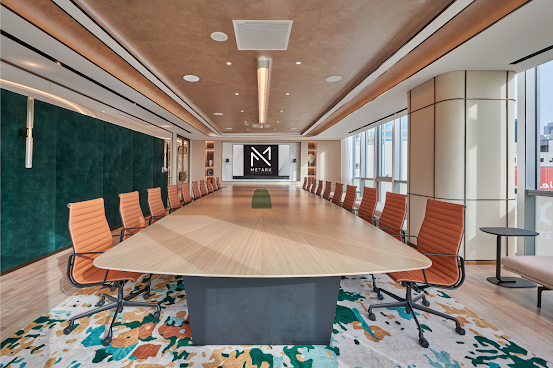The Psychology of Colors in Interior Design.
Color theory plays a crucial role in interior design, significantly impacting the psychological well-being and mood of the inhabitants. Each color evokes different emotional responses and can influence how a space feels.
Therefore, it's essential to consult with your clients about their preferred color schemes. This approach helps you understand their tastes and preferences, even if they can't pinpoint exact colors. At METARK Interiors, we are committed to creating spaces that resonate with your vision. Let's delve into the impact of popular colors in detail, empowering you to make informed and captivating design choices.
Color plays a pivotal role in interior design, influencing the ambiance, perception, and functionality of a space. Here's a look at how different colors can transform your home:
1. Red
- Effects: Stimulating, energetic, and passionate.
- Usage: Ideal for spaces where you want to encourage activity and interaction, such as dining rooms or living rooms. However, use sparingly in bedrooms as it can be too stimulating.
- Effects: Calming, serene, and soothing.
- Usage: Perfect for bedrooms and bathrooms, where relaxation and tranquillity are desired. Light blues can make a room feel airy and spacious, while darker blues can create a more intimate and cozy atmosphere.
3. Yellow
- Effects: Cheerful, uplifting, and energizing.
- Usage: Great for kitchens and breakfast nooks as it can stimulate appetite and encourage conversation. Be cautious with overuse, as too much yellow can cause anxiety.
4. Green
- Effects: Refreshing, balancing, and restful.
- Usage: Suitable for any room where you want to foster a sense of balance and harmony. It works well in living rooms and bedrooms, providing a restful environment.
5. Orange
- Effects: Warm, welcoming, and energetic.
- Usage: Good for social areas like living rooms and dining rooms where you want to stimulate conversation and warmth. Avoid in bedrooms as it may be too stimulating for restful sleep.
6. Purple
- Effects: Luxurious, creative, and calming.
- Usage: Deep purples are often associated with luxury and can be used in living rooms and master bedrooms. Lighter shades like lavender can create a calming and soothing atmosphere, suitable for bedrooms and bathrooms.
7. White
- Effects: Clean, spacious, and pure.
- Usage: White can make a space feel larger and more open, making it ideal for small rooms or areas where you want to create a feeling of cleanliness and simplicity. However, too much white can feel sterile, so balance it with textures and accents.
8. Black
- Effects: Sophisticated, elegant, and strong.
- Usage: Best used as an accent color to add depth and sophistication to a room. Overuse can make a space feel oppressive, so it's often paired with lighter colors to create a balanced look.
9. Gray
- Effects: Neutral, calming, and sophisticated.
- Usage: Works well in modern and contemporary designs, providing a neutral backdrop that allows other colors to stand out. It’s versatile and can be used in living rooms, bedrooms, and offices.
10. Brown
- Effects: Warm, stable, and comforting.
- Usage: Ideal for creating a cozy and grounded environment, making it a good choice for living rooms and studies. It pairs well with a variety of other colors, adding a natural element to the design.
.png)
.png)
.png)
.png)
.png)
.png)
.png)
.png)
.png)
.png)
.png)
.png)



.png)
.png)
.png)
.png)
.png)
.png)


.jpg)
.png)
.png)
.png)
.png)
.png)
.png)
.png)
.png)
.png)
.png)



